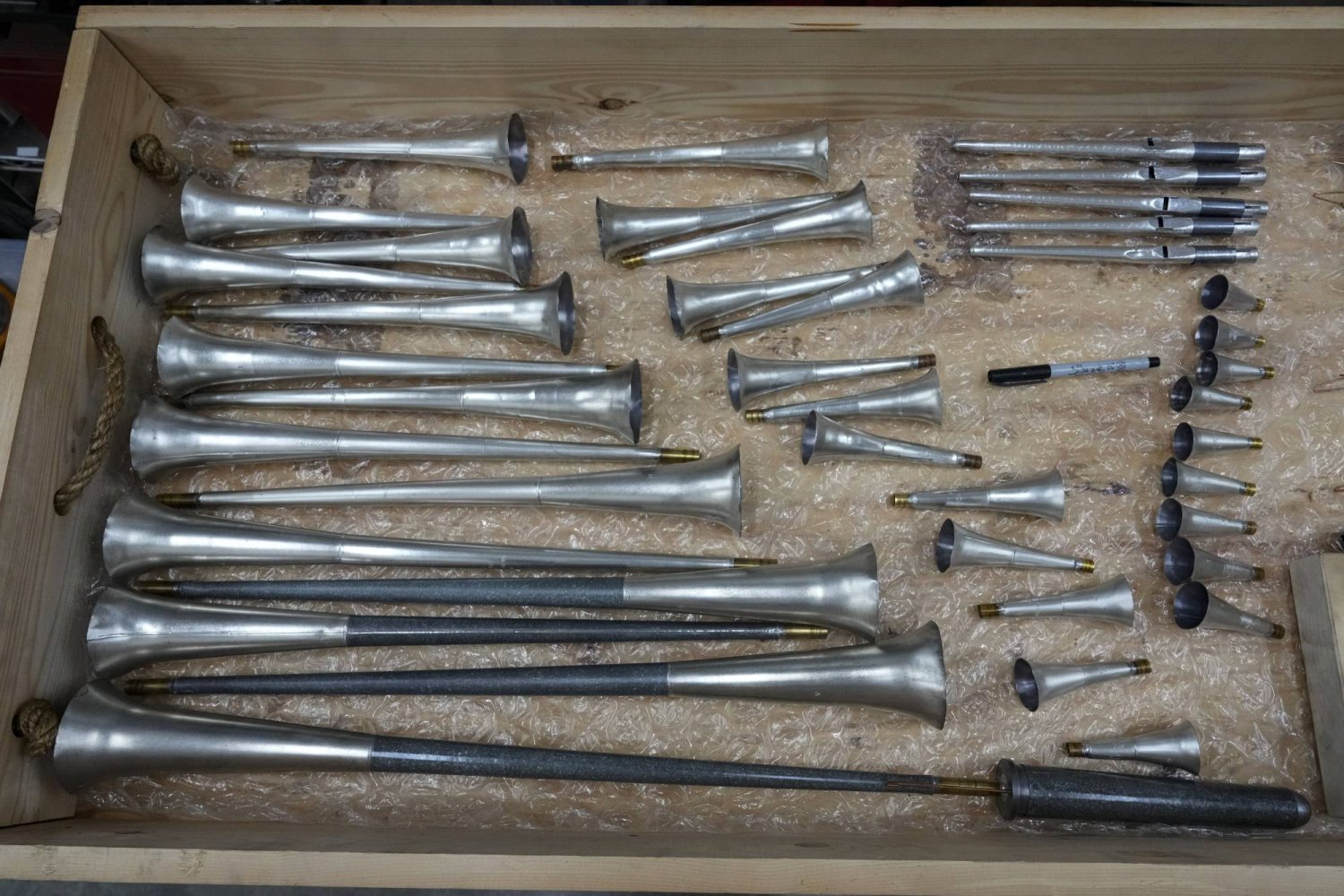Physical Address
304 North Cardinal St.
Dorchester Center, MA 02124
Physical Address
304 North Cardinal St.
Dorchester Center, MA 02124

DETROIT — Nearly a century ago, the Barton Opus pipe organ filled Detroit’s Hollywood Theatre with music, enhancing the drama and comedy of silent films. This magnificent instrument was built in 1927 and has been in storage for the past four decades, scattered across a garage, attic, and basement in suburban Detroit.
Currently, the Barton Opus is undergoing a meticulous restoration in Indianapolis. Once restored, it will be transported to the Rochester Institute of Technology (RIT) in western New York, where it will be reassembled and housed in a theater designed specifically for it.
Carlton Smith, who has been restoring the organ since 2020, says the Barton Opus could emulate a wide range of musical instruments like strings, flutes, and tubas. It also contained real percussion instruments such as a piano, xylophone, and drums, and could produce sound effects like steamboat and bird whistles.
For many, the organs and their organists were the true stars of that era. “One guy could do it all,” Smith remarks. “In big cities, theaters would be filled to the brim multiple times a day for live shows along with films. It was a huge production.”
The Hollywood Theatre, home to the Barton Opus, was known for its excellent acoustics and grandeur. During the golden age of Detroit’s auto industry, the theaters there were as opulent as those in New York, Chicago, Los Angeles, and San Francisco, says organist and organ technician John Lauter.
“We were such a rich market for moviegoers that the theater owners built these palatial places,” Lauter says.
Lauter, who is also the director of the Detroit Theatre Organ Society and president of the Motor City Theatre Organ Society, notes that the Hollywood Theatre organ was one of the largest crafted by Bartola Musical Instrument Co. Only three were ever produced. This Barton Opus is the last remaining one that hasn’t been altered.
Silent movie houses began to decline with the rise of television in the 1950s, leading to the closure of the Hollywood Theatre. Its fixtures were sold, and the Barton Opus was nearly lost. But in the early 1960s, Henry Przybylski saved the organ, purchasing it at auction for about $3,500. He then disassembled and stored it in his Dearborn Heights home for about 40 years.
“He never heard or played that instrument,” Lauter says. Przybylski spent most of his life owning the organ without ever assembling it. He passed away in 2000, but the organ’s journey didn’t end there.
In 2003, Steven Ball, a professional organist, inquired about purchasing the organ from Przybylski’s widow. He managed to gather enough funds to buy it, intending to find an institution that would restore it to its former glory. For years, it remained in storage until a fitting location could be found.
In 2019, RIT President David C. Munson contacted Ball to find the best theater organ for their institution. Ball decided to donate his Barton Opus to RIT, where it will serve as the centerpiece of a new performing arts center. The theater, designed to house the organ, is expected to open by January 2026. Smith mentions that the restoration work on the organ is a little over two-thirds complete.
“The theater is tailored specifically for this organ,” Munson says, adding that architect Michael Maltzan designed the pipe chambers to match the dimensions of the original Hollywood Theatre. “We have all the original plans for the organ and how the pipes were laid out.”
Although the exact cost of the restoration is yet to be determined, Munson believes the investment will yield remarkable results.
Source: Associated Press



